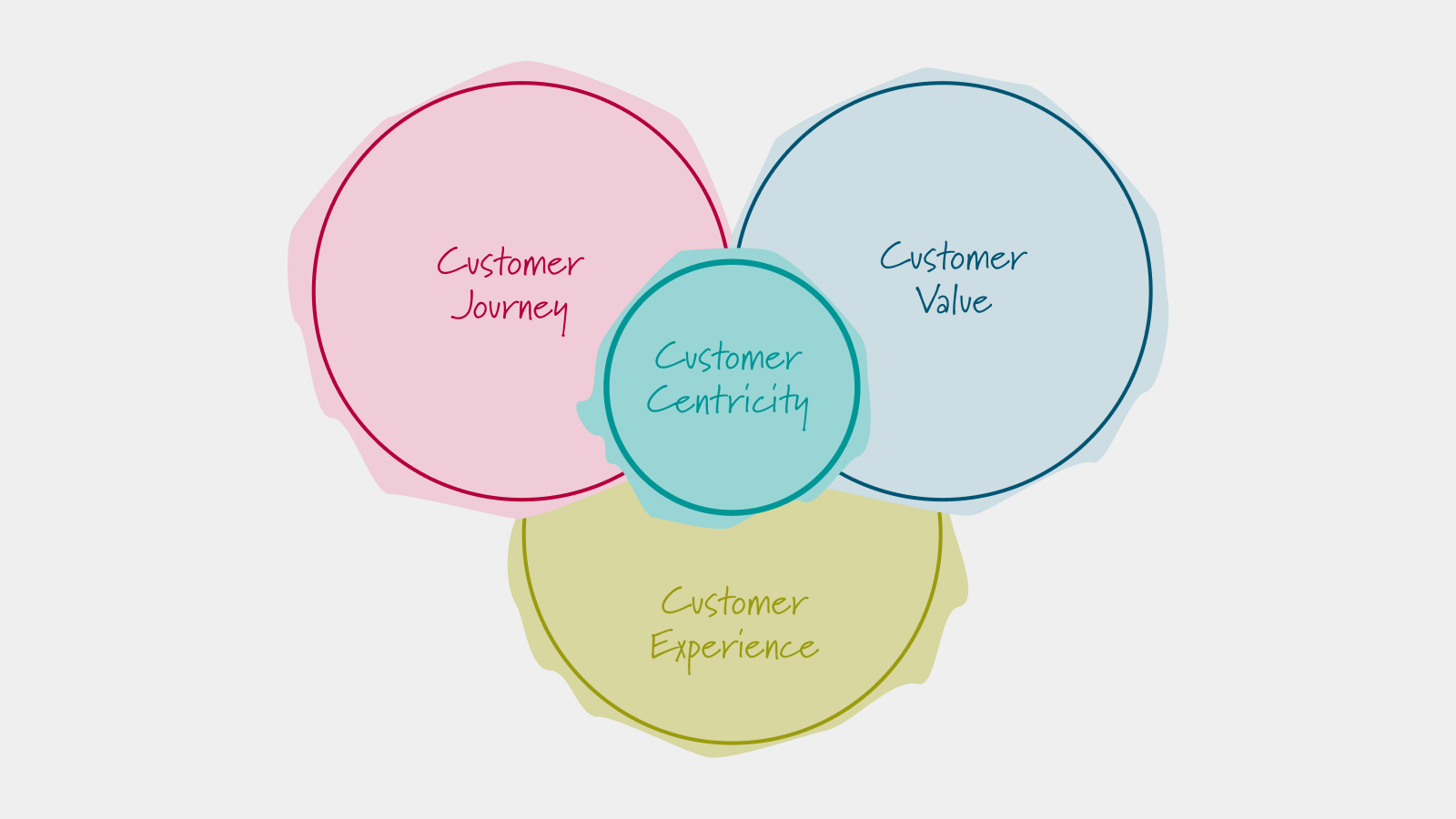
Ten Key Principles of Digital Transformation
An overview of digital transformation and its ten key principles and how we can learn from rising tech companies and other business transformations

Max Erdrich
24.1.2021
An overview of digital transformation, its ten key principles and how we can learn from rising tech companies and other business transformations
For most companies, the success of digital transformation is a key survival factor. And since it is not always clear which digitization technology will prevail the right business model behind it and the way it is implemented is far more important. The classic competition between products, services or companies is increasingly being replaced through competition between business models.
So, let us first clarify what is meant by digital transformation in simple terms: digital transformation refers to a continuous process of change based on digital technologies that affect society as a whole and companies particularly in economic terms as a digital revolution. The digital transformation is based on digital infrastructure and digital technologies that are developed in an ever-faster sequence and thus pave the way for new digital technologies.
The digitization trend itself is made possible by three main drivers:
- the increasing digitization of products, processes and services
- the emergence of platforms
- the accelerated innovation of business models

Sensors and the increased networking of products, services and processes are making a significant contribution to digitization. On the one hand, this results in new functional ranges of products and advanced services, and on the other hand in the complete virtualization of supply and value chains. In an increasing number of cases, these digitized products, processes and services are linked to platforms that collect, store and evaluate the data generated by digitization. Based on this data, completely new business models can be created, which can be used to better address and implement customer wishes. These business models, for their part often digital, promote growing digitization and create new generations of platforms.
Platforms have gained a firm place as a central link between digital data and innovative business models. Today, the largest number of services on the internet are delivered to customers via platforms. But these are much more than just a digital business channel. As a rule, platforms in combination with innovative business models connect up to hundreds of millions of people. Platforms also enable the exchange of information or economic services and produce an enormous amount of data in the process.
See the following blog post on Mobility Business Models in Times of AI And Digitization Mobility Business Models in Times of AI And Digitizationwhich discusses some of the above-mentioned developments in the mobility sector.
So, what does digital transformation mean for businesses? A digital transformation is a significant change to how an established company operates and has a high impact on its results. It affects the company’s business model (that is why it is a business transformation in the end) and entails transformations to the organization and (obviously) the technology landscape that supports it.

In an ideal world, the ultimate objective of any business transformation and digital transformation should be to provide value to the company’s stakeholders, such as customers, shareholders and employees. But in times of uncertainty around which technology might be dominant in the respective field of use, companies place their best bets on digital initiatives to establish a future-oriented business model in order to substantiate their relevance, position their business in new segments and stay close to the customer.
A digital transformation generally follows the same sequence or consists of the following building blocks:
- Generate data
- Assemble, normalize and connect data
- Analyze and visualize data in order to gain insights
- Generate added value from the data through new services, improved processes or new functionalities of products.
Individual transformation projects can start with each of the four steps. However, the overall vision and business model should be defined upfront to know which values are created and secured. In order to successfully master the challenges of digital transformation, a few key principles should be considered.
If you have been following our blog you might recognize the following list of key principles, which we discussed in an earlier blogpost on Ten Key Principles of Business Transformation:
- Manage the Gap
- Tap into the Collective Brain
- Streamline the Decision Making Process
- Close the Loop, Get Feedback Early
- Know What to Observe and Measure
- Focus and Prioritize
- Never Lose Sight of the Big Picture
- Build Prototypes
- Think in Scenarios
- Learn and Adapt Continuously

But instead of just posting the same content again, I adjusted the focus of these principles to fit this blog post by adding a few new aspects which are relevant in the context of digital transformation. So, before you start a digital transformation project or while you are working on it go ahead and check if you are aligned with the following principles:
1. Manage The Gap
Depending on your company’s maturity level regarding digitization, the gap between where you are now and where you would like to be after the transformation might differ significantly. But regardless of how big the gap is it needs to be managed.
First, a strong vision of where the journey should go needs to be developed. Many transformations start with a vague idea and you need to invest quite a bit of time to clarify the purpose of the transformation and set concrete objectives. The vision helps in mobilizing the organization and works often more on the alignment of teams than detailed implementation plans. The vision also bundles forces within the company, sets a baseline for an often-needed cultural change and sends a strong message across company borders towards partners and customers.
Especially in a dynamic environment with uncertain planning requirements and permanent reorientation of projects a strong vision can be a firm anchor to come back to.
Second, usually, a whole set of stakeholders needs to be consulted when it comes to defining where you stand right now and figuring out the transformative steps that lead you to the realization of your vision. The more you thought about the gap upfront the better you can manage it throughout the transformation.
2. Tap Into The Collective Brain
Digitization initiatives are almost always cross-functional, cross-departmental and cross-company and affect many people in different ways. There is a need to work together across existing boundaries and silos, involve stakeholders in the creative process and strive to create value for them. By doing so you will uncover issues and understand concerns upfront and will be able to react.
Without acting and communicating across those boundaries, the success of transformation projects is limited. Make sure to talk to your stakeholders, internal and external domain experts and the transformation team on a regular basis. There is a broad selection of digital tools in the market that can be used for brainstorming sessions and collaboration among teams – consider these when setting up meetings with larger teams.
Think at an early stage about who will be in the kick-off and transformation team, which partners need to be brought on board for complementary competencies, who is to be consulted internally. Good teams are goal-oriented, have a high level of diversity, a strong culture of communication and will most likely provide useful views on the transformation challenge.
3. Streamline The Decision Making Process
Once you have defined where you stand, what your vision and the gap in between are, you can make decisions about what to do. This sounds very simple, but this often breaks down in large transformation plans. The fact that the people who have identified and specified the gap are often not the same that make the decision about what to do about it and almost never are the people who must then implement the action. There might be a whole chain of decision-makers before this leads to a concrete action that is implemented. By ensuring that the team and the whole initiative is backed by a sponsor and supporter from top management that has been in the planning process from the beginning, you increase the chance that the project does not fail immediately in times of crisis and that the vision’s key building blocks are enforced in the event of resistance.
Rapid sprints and iterative procedures with increased stakeholder involvement as part of agile approaches are increasingly replacing the sequential waterfall model. Especially in a dynamic environment with uncertain user requirements, agility becomes relevant in the development process. Make sure that the decision process is streamlined, that those implementing the actions understand how they are contributing to the big picture and that you observe whether the action had the desired impact.
4. Close The Loop, Get Feedback Early
Especially in the case of long-term transformations, it is necessary to realize and communicate short-term progress and get feedback from short iterations.
Transformations involve a lot of uncertainty about what the stakeholders really want, about the best solution for it and about how to get there. By showing progress and involving other colleagues you strengthen the support for the initiative within the company, by showing the critics the feasibility and by strengthening the commitment among the management.
Nothing motivates more than success - implement and show feasible increments and project results but keep the big picture in mind.
5. Know What to Observe And Measure
Keeping the oversight in a complex transformation project or program is not always that easy. If you want to steer and manage through the digital transformation, you need to measure progress, quality and goal attainment along the way. There is just one problem, the more complex your transformation becomes the more things you could actually measure. Find out which factors are relevant to your success and monitor them effectively.
But it does not end there, once you have identified your key performance indicators you should also define which conclusions you draw from your observations and install the right measures at hand.
6. Focus And Prioritize
Instead of developing big long-term plans as in traditional non-digital transformation projects, the digital world is more action-oriented and focuses on getting increments done. This lean approach that is based in the startup scene does not necessarily require a budget for monthlong planning and the required resources. Instead, it is a matter of taking the next step, obtaining rapid customer feedback and adapting again. Because you are working iteratively, you need to focus on a few and the right things at a time. Cycles of designing, building and testing must be completed more quickly in order to accelerate learning progress.
Regarding the prioritization of tasks or work packages, go for those changes that carry the highest risks first, that is changes with high uncertainty and high impact. But do not forget to take some of the low-hanging fruits from the beginning, these changes are easy to implement but also have a high impact on the overall goal.
7. Never Lose Sight of The Big Picture
As mentioned before, often the entire organization must be energized and inspired by a vision in order to successfully carry out a transformation. But on a more detailed level for the actual delivery of the project a common understanding of the big picture that everyone is jointly trying to put together.

The big picture shows the main building blocks and how they fit together. This is critical for business transformations and is even more important for digital transformations, as systems communicate via interfaces within complex IT architectures. Defining and displaying the relevant steps you need to perform in order to put these building blocks together. Maintaining a big picture is difficult to do in large-scale transformations, but keeping future IT landscapes, processes and the future organizational setup in mind is critical if you do not want to end up with endless bits and pieces that do not fit together.
Integrating all these details into a coherent big picture on a continuous basis will pay off because the big picture helps you to create shared understanding at an overall level and empowers the transformation team and stakeholders to make the right decisions within their work packages.
Make sure to communicate the big picture throughout the organization - lack of communication is one of the most common reasons for flops in digitization projects.
8. Build Prototypes
Especially when it comes to high-risk work packages that have a high impact on the overall success, it is better to create prototypes quickly and redesign them again if they are unsuccessful, rather than to plan it all through to see the result. On a larger scale, the same goes for business models, services and consumer products - Every structure must live and be temporary.
Prototyping is about making abstract ideas more tangible, thus opening them to feedback and improvement. Long-term planning is becoming less and less useful in IT projects, especially for customer-oriented processes. Agility, learning and flexibility replace planning.
The project organization has become more and more important in recent years. Within the company, experts from various disciplines come together to form powerful project teams in order to address concrete digitization objectives.
9. Think in Scenarios
The world is complex and there is no way we can predict the future. Business models are changing rapidly and wherever there is rapid change an agile prototyping effort comes in handy. It is important to know today's business models and to generate new ones. In the center, a business model provides integrative answers to the following four questions: Who is the customer? What is the benefit promise? How is this implemented? Why is the business model profitable? Behind it lie the topics market, value proposition, value chain and earnings mechanics.
As all these factors change regularly you can anticipate the future by thinking through alternative scenarios of what might happen and then prepare for each of these possible futures.
A business model explains why a company creates value and earns money in the process. Today, there are hardly any new business models that are not data-driven. Data must be transformed into knowledge; business models establish the connection to value.
10. Learn And Adapt Continuously
Mistakes and feedback are sources of permanent learning. This is an enormous cultural challenge for many companies. In a prototyping strategy, uncertainties are replaced by findings and assumptions by facts. This is possible by building and testing a prototype for each assumption. With the increase of AI in companies, employees will also need new requirements: More basic technological knowledge is expected in all functions and more emotional intelligence.
Over the past years, it has become apparent that more and more highly qualified IT experts and programmers are no longer prepared to follow the classic paths of large companies. Rather, they are increasingly looking for fulfillment in the task itself. There is a strong tendency in the metropolises to become digital portfolio workers. Not the unemployed, but the highly competitive talents are opting for portfolio jobs in coworking spaces.
Digitalization has always shown a tendency towards concentration. The principle "The winner takes it all" means that you have to win or lose completely. Splitting cakes is difficult in markets with absolute transparency. Therefore it is of great importance to look for the right partners and to work together to tackle goals. In phases where something new is to be created, working together in networked worlds is more important than the opposition to each other. Partnerships become important in ecosystems, which are located along with the customer journey development - for example in the areas of travel, health, living and finances. Here, it is important to offer the more demanding customer everything from one source to deliver a hand. This is possible because of the low transaction costs, the increased data quality and better data analytics. Today, travel cancellation insurance is usually taken out online at the point of sale in the travel portal: a small cross is enough and classic insurances have to be new partnerships here.
Workshops
Resources
All Rights Reserved.





